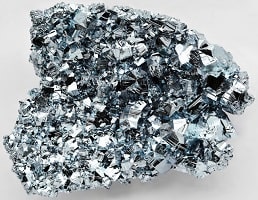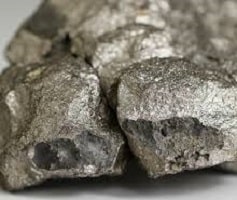We elaborate the uses of Nitrogen and atomic properties with characteristics. Nitrogen is a colorless-looking chemical element with an atomic number 7. Its symbol is N and it belongs to the group of nonmetals and its usual state in nature is gaseous. Nitrogen is located at position 7 on the periodic table.
You Can Visit Our Managed: Periodic Table Main Page
On this page you can discover the chemical properties of nitrogen and information about nitrogen and other elements on the periodic table such as phosphorus, carbon, oxygen or helium. You will also learn what nitrogen is for and you will know what its uses are through its properties associated with nitrogen, such as its atomic number or the usual state in which nitrogen can be found.
You will be able to see nitrogen qualities such as its melting and boiling point, its magnetic properties or what its chemical symbol is. In addition, here you will find information about its atomic properties such as the distribution of electrons in nitrogen atoms and other properties.
For some elements, some of this information is unknown. In these cases we show the properties attributed to them.
Nitrogen properties
One of the properties of non-metal elements like nitrogen is for example that non-metal elements are poor conductors of heat and electricity. Nitrogen, like the other nonmetals, has no luster. Due to their brittleness, nonmetals such as nitrogen cannot be flattened to form sheets or stretched to become threads.
The state of nitrogen in its natural form is gaseous. Nitrogen is a colorless chemical element and belongs to the group of nonmetals. The atomic number of nitrogen is 7. The chemical symbol for nitrogen is N. The melting point of nitrogen is 63.14 degrees Kelvin or -209.01 degrees Celsius or degrees Celsius. The boiling point of nitrogen is 77.35 degrees Kelvin or -194.8 degrees Celsius or degrees Celsius.
Uses of nitrogen
Nitrogen is a colorless, odorless, tasteless, and generally inert (nonreactive) gas. If you have ever wondered what nitrogen is for , here is a list of its possible uses:
- Nitrogen is used to preserve packaged foods by stopping the oxidation of the food causing it to spoil.
- The bulbs may contain nitrogen as a cheaper alternative to argon .
- Nitrogen gas is often used on top of liquid explosives to prevent them from detonating.
- Nitrogen is used to produce many electrical parts such as transistors, diodes, and integrated circuits.
- When dried and pressurized, nitrogen gas is used as a dielectric gas for high voltage equipment.
- It is used for the manufacture of stainless steel.
- It is used to reduce the risk of fire in the military fuel systems of the aircraft.
- Nitrogen gas is used to fill the tires of aircraft and automobiles (cars). However, commercial vehicles often use normal air.
- The nitrogen tanks are gradually replacing tanks dioxide carbon source feed paintball guns.
- It can also be used as an alternative to carbon dioxide in beer pressurization . Nitrogen gas makes bubbles smaller so beer is softer.
- Liquid nitrogen is used for the preservation (called cryopreservation, due to the low temperature) of blood and other biological samples. It is also used to cool X-ray detectors and central processing units in computers when they are hot.
- Nitrogen is a component of almost all pharmacological drugs. Laughter gas (nitrous oxide) can be used as an anesthetic.
Atomic properties of nitrogen
The atomic mass of an element is determined by the total mass of neutrons and protons that can be found in a single atom belonging to this element. As for the position where to find nitrogen within the periodic table of the elements, nitrogen is found in group 15 and period 2. Nitrogen has an atomic mass of 14.0067 u.
The electronic configuration of nitrogen is [He] 2s2 2p3. The electronic configuration of the elements, determines the form in which the electrons are structured in the atoms of an element. The average radius for nitrogen is 65 pm, its atomic radius or Bohr radius is 56 pm, its covalent radius is 75 pm, and its Van der Waals radius is 155 pm. Nitrogen has a total of 7 electrons whose distribution is as follows: In the first layer it has 2 electrons and in the second it has 5 electrons.
You Can Visit Our Managed: Periodic Table Main Page
Nitrogen characteristics
Below you can see a table showing the main characteristics of nitrogen.
| Nitrogen | ||
|---|---|---|
| Chemical symbol | N | |
| Atomic number | 7 | |
| Group | fifteen | |
| Period | 2 | |
| Appearance | colorless | |
| Block | p | |
| Density | 1.2506 kg / m3 | |
| Atomic mass | 14.0067 u | |
| Average radius | 65 pm | |
| Atomic radio | 56 | |
| Covalent radius | 75 pm | |
| Van der Waals radio | 155 pm | |
| Electronic configuration | [He] 2s2 2p3 | |
| Electrons per layer | 2, 5 | |
| Oxidation states | + -3, 5, 4, 2, 1 (strong acid) | |
| Crystal structure | hexagonal | |
| State | gaseous | |
| Melting point | 63.14 K | |
| Boiling point | 77.35 K | |
| Heat of fusion | 0.3604 kJ / mol | |
| Critical temperature | 126.19 K | |
| Critical pressure | 3.39 MPa Pa | |
| Electronegativity | 3.04 | |
| Specific heat | 1040 J / (K · kg) | |
| Electric conductivity | __ 106S / m | |
| Thermal conductivity | 0.02598 W / (Km) | |
You Can Visit Our Managed: Periodic Table Main Page




